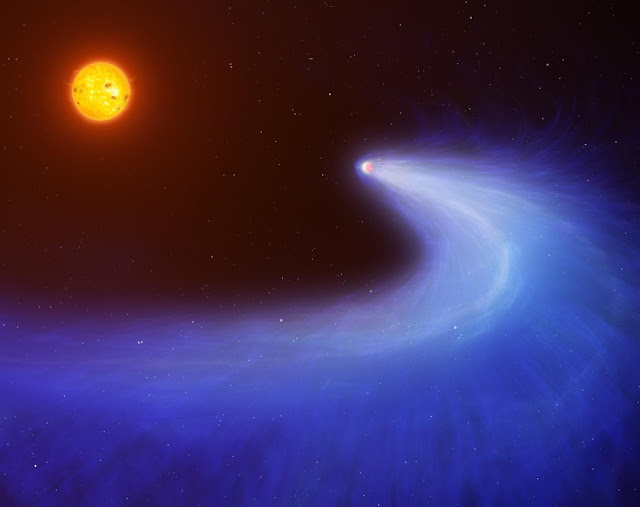Artist’s impression of GJ 436b. Image credit: Mark Garlick/University of Warwick.
GJ 436b transits in front of its parent star every 2.64 days. The transit depth in the ultraviolet band is 56.3 ± 3.5 percent (1σ), far deeper than the transit depth of 0.69 percent in the optical band. This means that over half the disk of the star is eclipsed in the ultraviolet band. Furthermore, in the ultraviolet band, the transit of GJ 436b starts ~2 hours before and ends more than 3 hours after the ~1 hour optical transit. Such a transit signature is believed to be due to the passage of a large cloud of hydrogen surround and trailing the planet.
The mass-loss rate of GJ 436b is estimated to be between ~10² to 10³ tons per second. At this rate, the planet loses only ~0.1 percent of its atmosphere per billion years, far too small to deplete the planet’s atmosphere over the lifetime of its parent star. However, planets similar to GJ 436b that orbit closer to their host stars can experience much more dramatic mass-loss, possibly even causing them to erode down to their rocky cores.
Reference:
Ehrenreich et al., “A giant comet-like cloud of hydrogen escaping the warm Neptune-mass exoplanet GJ 436b”, Nature 522, 459-461 (25 June 2015)
